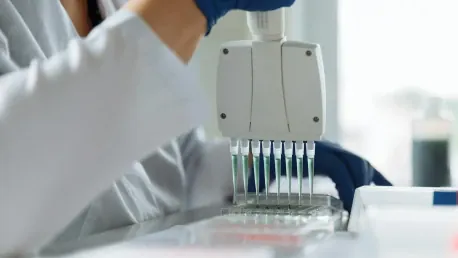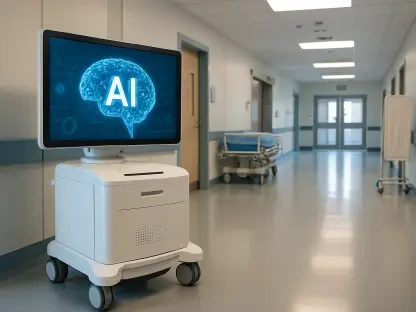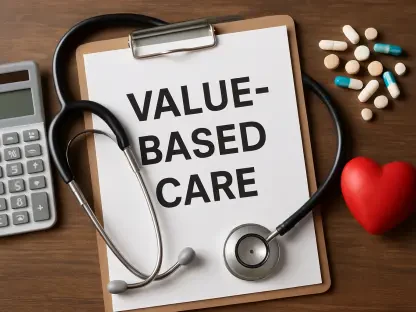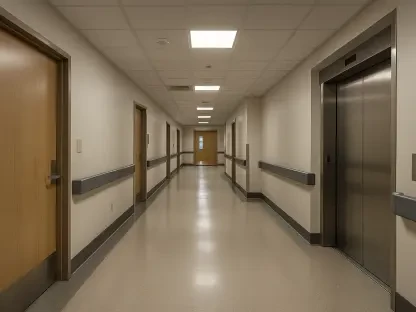James Maitland is an expert in robotics and IoT applications in medicine, driven by a strong passion for leveraging technology to advance healthcare solutions. In this interview, we will explore how technology is reshaping medical diagnostics and treatments through various innovative approaches such as home health monitoring, electronic health records (EHR), artificial intelligence, robotics in surgery, and 3D printing and bioprinting.
How is daily health monitoring changing the traditional approach to diagnosing health conditions?
Daily health monitoring is transforming the traditional diagnostic approach by providing continuous and comprehensive data. Instead of relying on sporadic check-ups and single snapshots of health, real-time data from wearable devices and smart health trackers offer a constant stream of information, allowing for more accurate and timely diagnosis. This helps in identifying health issues earlier and tracking the progression of chronic conditions with greater precision.
What types of health data can wearable devices and smart health trackers measure?
Wearable devices and smart health trackers can measure a wide range of health metrics, including heart rate, oxygen levels, blood pressure, glucose levels, sleep patterns, and even detect irregular heart rhythms. These devices collect extensive data that can be used to monitor a patient’s health on a daily basis, providing valuable insights for both the patient and healthcare professionals.
How do these continuous tracking systems help in the management of chronic conditions like hypertension?
Continuous tracking systems are particularly beneficial in managing chronic conditions such as hypertension. By providing constant monitoring of blood pressure levels, these systems enable doctors to observe patterns and fluctuations in real-time. This allows for more precise adjustments in medication and treatment plans, improving overall management of the condition and reducing the risk of serious complications.
Can you give examples of conditions that can be detected earlier through home health monitoring?
Conditions such as atrial fibrillation, sleep apnea, and diabetes can be detected earlier through home health monitoring. Continuous tracking devices can capture irregularities and deviations from normal health metrics that may not be apparent during infrequent medical visits. Early detection through these devices enables timely intervention, potentially preventing more serious health issues.
How do electronic health records help to reduce medical miscommunication?
Electronic health records (EHRs) help reduce medical miscommunication by providing a centralized, digital repository of a patient’s complete medical history. With EHRs, healthcare providers can access and share information instantly, ensuring that everyone involved in a patient’s care is on the same page. This reduces the risk of errors and ensures that treatment decisions are based on comprehensive and up-to-date information.
What are some of the key benefits of having digital records over paper charts?
Digital records offer numerous advantages over paper charts, including improved accessibility, better organization, and enhanced security. Digital records can be accessed quickly from anywhere, making it easier to coordinate care among multiple providers. They are less prone to physical damage and loss, and security measures such as encryption protect patient data from unauthorized access.
How do EHRs contribute to the continuity of care, especially for patients with chronic conditions?
EHRs contribute significantly to continuity of care by ensuring that all healthcare providers involved in a patient’s treatment have access to the same information. This is especially important for patients with chronic conditions who may see multiple specialists. Seamless sharing of records helps to maintain consistent treatment plans, reduces the likelihood of conflicting advice, and streamlines follow-up care.
In what ways do electronic health records help to eliminate redundant tests and unnecessary treatments?
EHRs help eliminate redundant tests and unnecessary treatments by making previous test results and treatment histories readily available to all healthcare providers. When a doctor can see that certain tests have already been performed or treatments tried, they can avoid repeating them, which saves time, reduces costs, and minimizes patient exposure to unnecessary procedures.
How is artificial intelligence revolutionizing the way doctors detect and diagnose diseases?
Artificial intelligence (AI) is revolutionizing disease detection and diagnosis by providing advanced tools that can analyze vast amounts of data quickly and accurately. AI algorithms can identify patterns and anomalies in medical images, lab results, and patient histories, often detecting issues sooner and with greater precision than traditional methods. This leads to earlier diagnosis and more effective treatment plans.
What are some examples of how AI-powered software is being used in radiology?
In radiology, AI-powered software is used to analyze X-rays, MRIs, and CT scans. These tools can identify abnormalities such as tumors, fractures, and signs of stroke much faster than human radiologists, and with high accuracy. For example, AI can flag early signs of cancers that might be missed during manual review, facilitating early intervention and better patient outcomes.
How do AI algorithms improve the speed and accuracy of diagnosing conditions like cancer and strokes?
AI algorithms improve speed and accuracy by processing and interpreting medical images and data much more rapidly than humans. They are trained on vast datasets to recognize subtle signs of conditions like cancer and strokes. This results in quicker diagnosis, enabling timely treatment, which is crucial for conditions where every moment counts.
What are the advantages of using AI to analyze medical images over traditional methods?
The advantages of using AI to analyze medical images include enhanced precision, faster processing times, and the ability to handle large volumes of data. AI systems are not prone to fatigue, reducing the risk of oversight that can occur with human analysis. They also continuously learn and improve from new data, becoming more accurate over time.
How has robotic-assisted surgery changed surgical procedures?
Robotic-assisted surgery has revolutionized surgical procedures by enabling minimally invasive techniques that improve precision and reduce the physical trauma of surgery. Surgeons operate robotic systems that provide greater control, stability, and dexterity, allowing for more exact movements and smaller incisions. This results in fewer complications and faster recovery times for patients.
What are the major benefits of using robotic systems in surgery?
Major benefits of using robotic systems in surgery include enhanced precision, reduced blood loss, minimized tissue damage, and shorter hospital stays. Robotic systems offer superior control and scaling of movements, which allows for more delicate and precise operations. Patients benefit from less post-operative pain, fewer complications, and reduced recovery times.
How do robotic systems improve precision and reduce trauma to the body during surgery?
Robotic systems improve precision through their ability to make very precise movements that exceed the human hand’s capabilities. They provide enhanced visualization of the surgical site and allow for better maneuverability in tight spaces, which reduces trauma to surrounding tissues. This means smaller incisions, less bleeding, and decreased risk of infection.
What are the patient benefits in terms of post-operative recovery when using robotic-assisted surgery?
Patients experience numerous benefits in post-operative recovery with robotic-assisted surgery, including less pain, shorter hospital stays, and quicker return to daily activities. The minimally invasive techniques used in robotic surgery result in smaller incisions and less trauma, leading to faster healing and reduced risk of complications.
How is 3D printing being used currently in the medical field?
3D printing is currently being used in the medical field to create customized prosthetics, implants, and anatomical models for surgical planning. Personalized joint replacements and dental implants are tailored to fit individual patients’ anatomy, improving comfort and functionality. Anatomical models assist surgeons in preparing for complex procedures, enhancing surgical outcomes.
What are the advantages of using 3D-printed prosthetics and implants tailored to a patient’s anatomy?
The advantages of using 3D-printed prosthetics and implants tailored to a patient’s anatomy include a better fit, increased comfort, and improved functionality. Customization ensures that the prosthetics and implants integrate better with the patient’s body, reducing the risk of complications and enhancing overall performance and quality of life.
Can you explain what bioprinting is and how it differs from traditional 3D printing?
Bioprinting involves using living cells and biomaterials to create tissue structures, whereas traditional 3D printing uses inert materials like plastic or metal to create objects. Bioprinting aims to produce functional biological tissues such as skin, cartilage, or even organs, potentially revolutionizing regenerative medicine and transplantology.
What are some potential applications of bioprinting in the future of medicine?
Potential applications of bioprinting in the future of medicine include creating skin grafts for burn victims, cartilage for joint repair, and patches for heart tissue damaged by heart attacks. Eventually, the goal is to develop fully functional organs for transplantation, which could address the critical shortage of donor organs and save countless lives.
What is your forecast for the future of healthcare technology?
The future of healthcare technology is incredibly promising, with continuous advancements leading to more personalized, efficient, and effective care. Innovations in AI, robotics, 3D printing, and bioprinting will further revolutionize diagnostics, treatments, and patient outcomes. As technology evolves, we can expect to see more integration of these tools into everyday medical practice, leading to a new era of precision medicine and patient-centered care.









